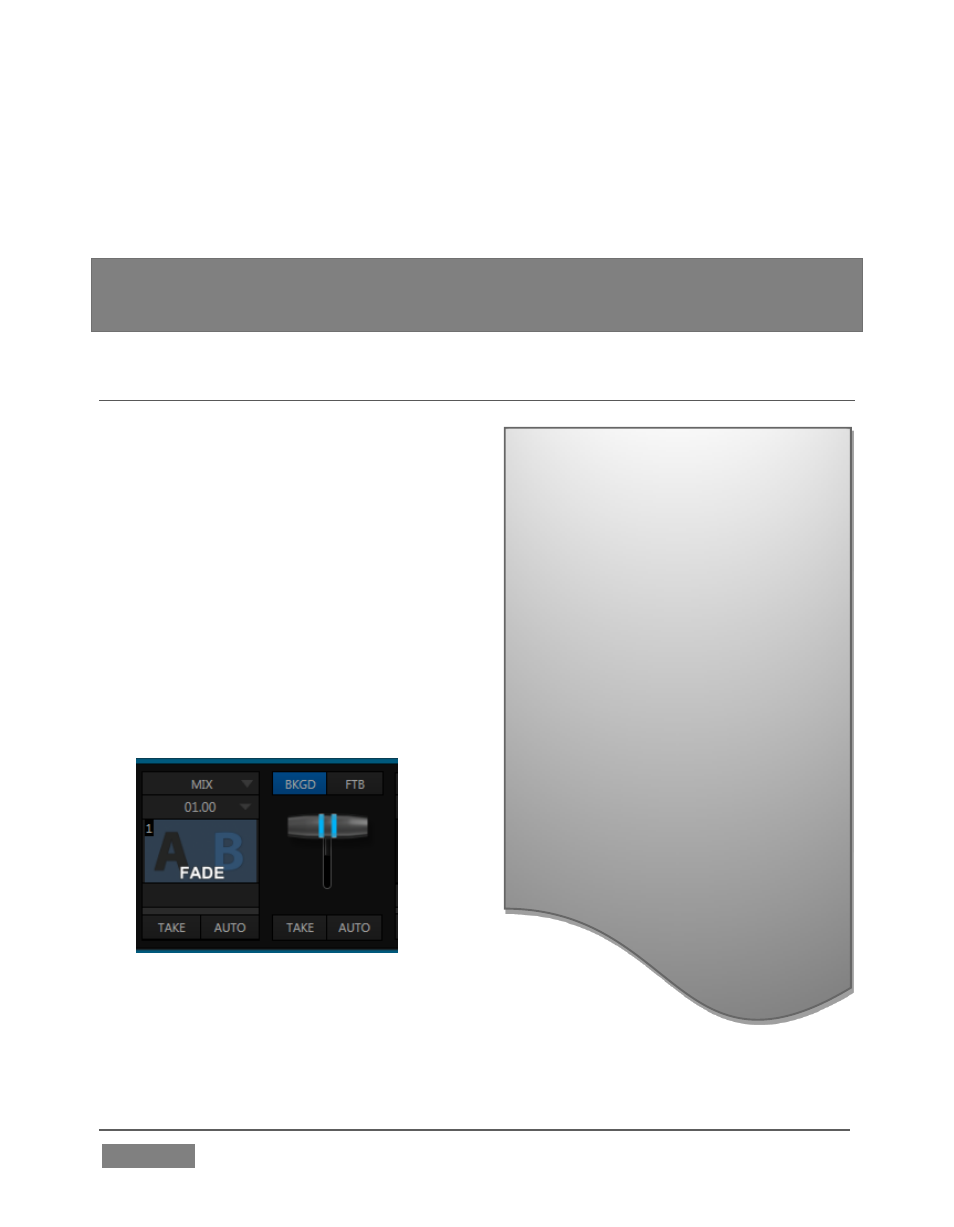Ection, Odes, Section 14.2 – NewTek TriCaster 8000 User Manual
Page 248

Page | 232
Autoplay and the M/E:
One notable point regarding an
M/E in Mix mode and the main
Switcher involves the Autoplay
feature (see Section 11.2.3).
To avoid undesirable consequences
for Media Player content aired on
the all-important main Program
output, M/E’s in Mix mode trigger
Autoplay operations within the
same M/E only.
As well, a switch in the TriCaster
options menu toggles AutoPlay’s
triggering of ‘Auto out’ transitions.
For TriCaster 8000, M/E buttons also appear on source selection rows and Key
channel source menus inside the M/E panels. This type of M/E, referred to as
“reentrant”, is an exceptionally powerful feature, and one offering endless creative
possibilities.
Note: Self-referential reentrancy (i.e., re-assigning a given M/E as one of its own sources)
is not supported. TriCaster will simply show black in such cases. However you can often
mimic effects of this sort by using multiple channels in another M/E .
SECTION 14.2 M/E MODES
At first glance, an M/E panel in its default
operating mode (Mix) is scarcely
distinguishable from the main Switcher.
However, each of TriCaster’s M/Es actually
offers two different operating modes:
1. Mix (the default mode): A secondary
switcher layout, with controls and
options that are very similar to the
main Switcher.
2. Effect mode: The M/E is configured for
effects, including virtual set operations.
FIGURE 221
The M/E’s mode is set using a menu above the effect icon in the
central control group (Figure 221) of the panel. For the most part, you
will initially see very little difference in the M/E panel when you change modes.